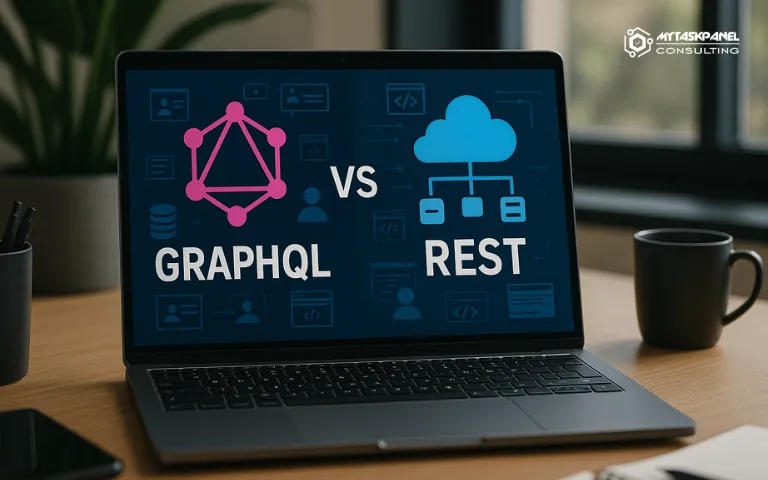When developing APIs, one of the key decisions developers must make is which technology to use for communication between the client and the server. For a long time, REST has been the de facto standard for building APIs, but in recent years, GraphQL has emerged as an innovative alternative that addresses some of REST’s limitations. In this article, we’ll explore the differences between GraphQL and REST, their pros and cons, and how to choose the best option for your project.
What is REST?
REST (Representational State Transfer) is an architectural style for communication between systems, based on the HTTP protocol. It uses HTTP methods such as GET, POST, PUT, and DELETE to perform operations on application resources.
Each resource in a REST API has a specific URL, and data is typically exchanged in JSON or XML format.
Advantages of REST
- Simplicity and standardization: REST is based on well-defined and widely adopted principles.
- Scalability: REST is ideal for distributed and scalable systems.
- Caching and performance: it can take advantage of HTTP caching to improve performance.
- Browser compatibility: because it’s based on HTTP, it works well with any web technology.
Disadvantages of REST
- Data over-fetching: REST returns fixed responses, which can lead to unnecessary data being sent to the client.
- Multiple requests: sometimes, multiple API calls are needed to fetch related data.
- Inflexible structure: changing the data structure often requires modifying the API and all its clients.
What is GraphQL?
GraphQL is a query language for APIs developed by Facebook in 2015. Unlike REST, GraphQL allows clients to request exactly the data they need—and nothing more. Instead of multiple endpoints, GraphQL uses a single endpoint that interprets queries and returns customized responses.
Advantages of GraphQL
- Precise querying: clients can request only the fields they need, reducing unnecessary data transfer.
- Fewer requests: multiple resources can be fetched in a single request.
- Flexible API evolution: new fields can be added without affecting existing clients.
- Self-documenting: GraphQL provides interactive documentation and tools like GraphiQL for API exploration.
Disadvantages of GraphQL
- Higher complexity: GraphQL requires a more complex initial setup compared to REST.
- Caching issues: it doesn’t natively integrate with HTTP caching.
- Resource consumption: queries can be expensive if not well managed, as they allow large data retrieval in a single request.
GraphQL vs REST: a detailed comparison
1. Data retrieval flexibility
- REST: clients receive predefined responses structured by the server, which can result in data over-fetching.
- GraphQL: allows clients to request only the necessary data, optimizing bandwidth use and efficiency, especially for low-resource devices.
2. Number of required requests
- REST: may require several calls to retrieve related data. For example, getting a user’s information and their posts typically requires two separate requests.
- GraphQL: can fetch data from multiple related entities in a single query, reducing server calls.
3. Caching strategy
- REST: works well with HTTP caching, enabling fast responses without contacting the server every time.
- GraphQL: doesn’t support native HTTP caching, so custom strategies are often required to improve performance.
4. Ease of use and adoption
- REST: has extensive documentation and compatibility with most technologies. Its simplicity makes it easy to learn and implement.
- GraphQL: steeper learning curve, as it requires schema definitions, query resolvers, and its own caching system
5. Scalability and performance
- REST: highly scalable in distributed environments, though large responses may cause data overload.
- GraphQL: enables query optimization, but if poorly managed, complex queries can strain the database.
6. Security and access control
- REST: security typically handled through traditional mechanisms like JWT tokens, OAuth, and endpoint-level access control.
- GraphQL: offers more flexibility but requires detailed authorization rules to prevent unauthorized access to sensitive data.
Which is better for your API?
Choosing between GraphQL and REST depends on the type of application and your project’s specific requirements.
- If you need a simple, standard API that integrates well with existing tools, REST is likely the best option.
- If you’re building a complex application with data optimization needs and rapid evolution, GraphQL may be the better choice.
Both GraphQL and REST have their strengths and weaknesses. REST remains a reliable and widely adopted technology, ideal for most web and mobile apps. On the other hand, GraphQL offers unmatched flexibility and is especially useful in apps where efficient data fetching is crucial.
Before making a decision, assess your application’s complexity, performance requirements, and your team’s implementation capabilities. In some cases, a hybrid approach that combines both technologies can help you leverage the best of each.

